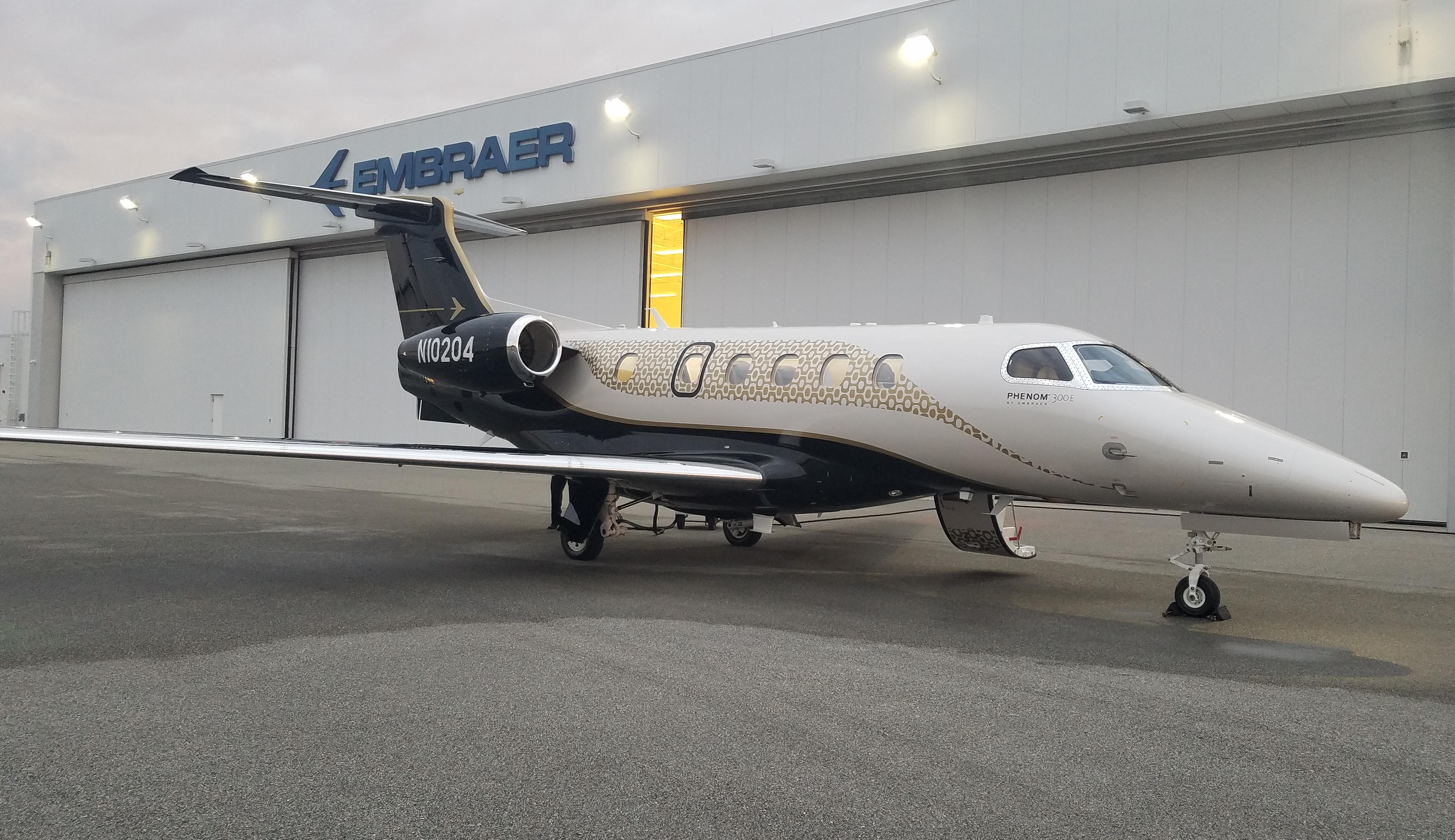
MELBOURNE, Florida—Embraer’s popular Phenom 300E light jet is undergoing an upgrade with improvements in performance, comfort and technology as well as an optional new refined interior called the Bossa Nova, reminiscent of Brazilian jazz.
The company announced the improvements Jan. 31.
Following a media flight in the aircraft from its Embraer Executive Jets headquarters here to Fort Lauderdale, Alvadi Serpa, director of product strategy, said the upgrades followed input by customers.
“As long as you listen to your customers, you will know exactly what needs to be done,” Serpa said.
The special Bossa Nova interior features piano black seating with custom detailed stitching inspired by the famous sidewalks of Rio de Janeiro, mirror black tables and cabinetry, gold-plated accents, fold-down monitors, invisible eyeball vents and other touches.
“It’s 1960s meets James Bond,” said Jay Beever, Embraer Executive Jets vice president of interior design.

Certification is expected at the end of the first quarter, with first deliveries in May. List price is $9.65 million, up from the list price of $9.45 million for the previous version. The Bossa Nova interior is a $150,000 option, and a connectivity package costs about $160,000 more, Serpa said.
The improved Phenom 300E will have an increased speed of Mach 0.80, up from 0.78, high-speed cruise of 464 kt., up from 446 kt., and a range of 2,010 nm with five occupants and IFR reserves compared to 1,992 nm. Engine thrust has increased by 118 lbf. per engine in the Pratt &Whitney engines, now to be named the PW535E1.
The Phenom 300E, which holds nine to 11 occupants in a choice of three interior layouts, includes a quieter cabin than its earlier version due to a redesign of the thermal acoustic insulation package and three check valves, an addition of a muffler in the air conditioning system and other changes.
Noise reduction improvements include lower overall inflight cabin noise, lower high-frequency noise and lower noise during boarding.
While decibel levels have not decreased significantly, it is “not the quantity but the quality of the noise,” Serpa said.
Optional avionics upgrades include predictive wind shear awareness and an Embraer-developed runway overrun awareness and alerting system to warn pilots if an aircraft’s approach is too steep or too fast.
Runway overruns are the third leading cause of incidents and accidents, Serpa said. The alerting system, which engages at 1,000 ft. agl., warns the crew through primary flight display messages, oral warnings and data recorder.
“We believe this is something special,” Serpa said. It is the first technology of its kind to be developed and certified in business aviation, he said.
The upgrade also includes a standard new weather radar, ADS-B In, an emergency descent mode, graphical weight and balance, VFR approach, couple go-around and other items.
Embraer introduced the Phenom 300 in 2005 and made its first customer delivery in December 2009.Since then, it has delivered more than 540 Phenom 300 and Phenom 300E aircraft. Number 571 can be seen on the production line at Embraer’s Melbourne facility.
It largest fleet customers include NetJets, Flight Options and Airshare.





